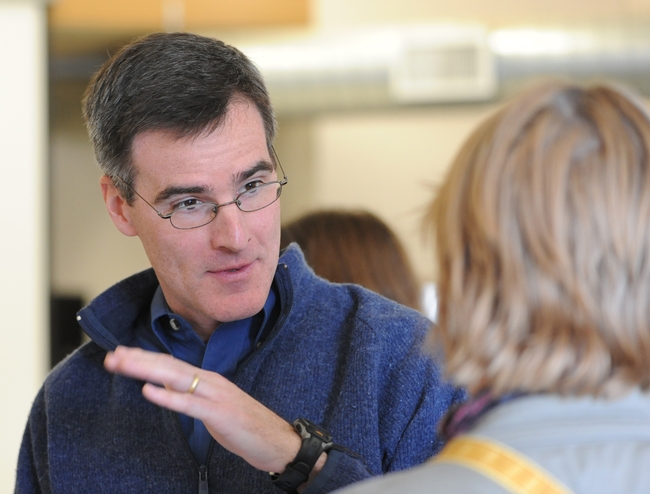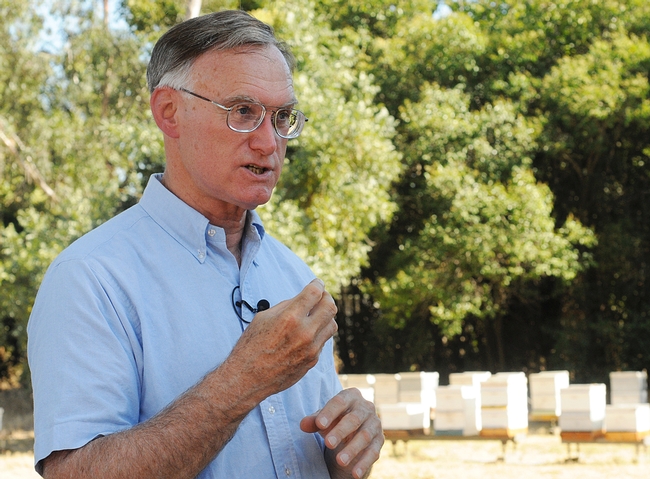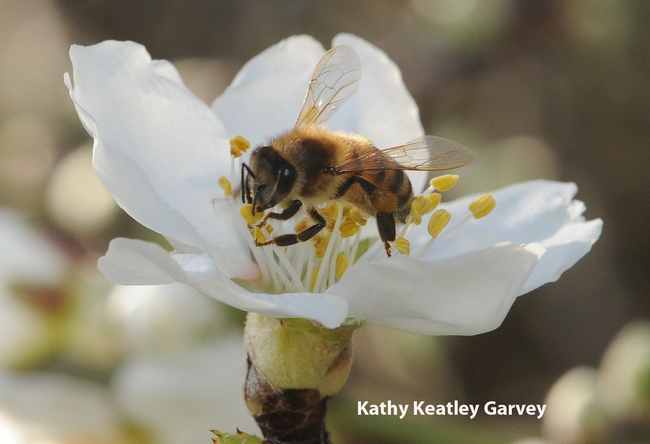Bee specialists Neal Williams and Eric Mussen of the UC Davis Department of Entomology are among those quoted in a comprehensive news story, "Hives for Hire," published March 3 in the Los Angeles Times.
"Almond trees are exploding with pink and white blossoms across the vast Central Valley, marking the start of the growing season for California's most valuable farm export," wrote LA Times reporter Marc Lifsher in the lede.
Indeed they are.
This is a $3-billlion-a-year industry and the acreage amounts to some 750,000 acres. Approximately 2.6 million colonies from across the country are trucked into California for the almond pollination season.
"Without the honey bees...the (almond) industry doesn't exist," Williams told Lifsher. "We need those bees. We need them to be reliable, and we need them at the right time."
Williams, a pollination ecologist who joined the UC Davis Department of Entomology faculty in 2009, is an expert on bees, especially native bees (honey bees are not native; they were brought here in the 1600s by the European colonists).
An assistant professor of entomology, Williams heads a busy lab of graduate students and post-doctoral students. He just returned from Fukuoka, Japan, where he was one of the featured speakers at the International Symposium on Pollinator Conservation.
Also quoted in the LA Times piece was honey bee guru Eric Mussen, Extension specialist with the UC Davis Department of Entomology since 1976.
Mussen discussed bee health with Lifsher and the collapse disorder (CCD), the mysterious malady characterized by adult bees abandoning the hive. Mussen regularly provides updates about bee health to national and state bee conferences and at beekeeper association meetings. Mussen writes the bimonthly from the UC apiaries and the periodic Bee Briefs, both available free on the UC Davis Department of Entomology website.
So, what's the word? Mussen tells his constituents that beekeeping is a complex issue, as is CCD, which he attributes to multiple factors, including pests, parasites, pesticides, diseases, malnutrition and stress.
Yolo County-based beekeeper Henry Harlan of Henry's Bullfrog Bees, who maintains some 2400 hives, said it well when he told Lifsher that beekeeping is an inexact science. "If you meet a beekeeper who says he knows it all, his bees will probably be dead next year."
Indeed, it's a sinking feeling to open your hive at winter's end and find it empty.
Attached Images:

Neal Williams discusses native bees at a recent conference in Woodland. (Photo by Kathy Keatley Garvey)

Extension apiculturist Eric Mussen at the Harry H. Laidlaw Jr. Honey Bee Research Facility, UC Davis. (Photo by Kathy Keatley Garvey)

Honey bee working an almond blossom at UC Davis. (Photo by Kathy Keatley Garvey)